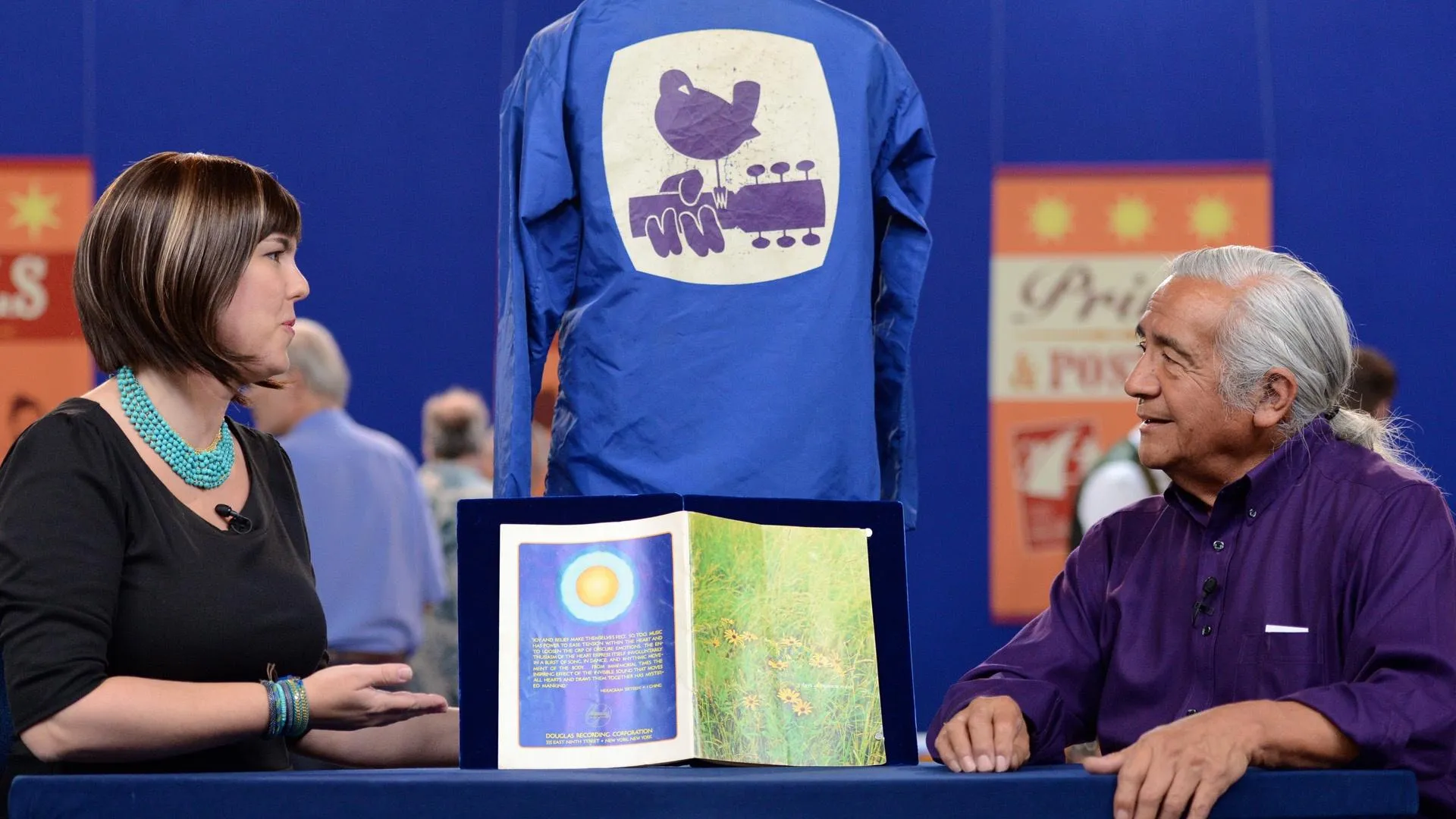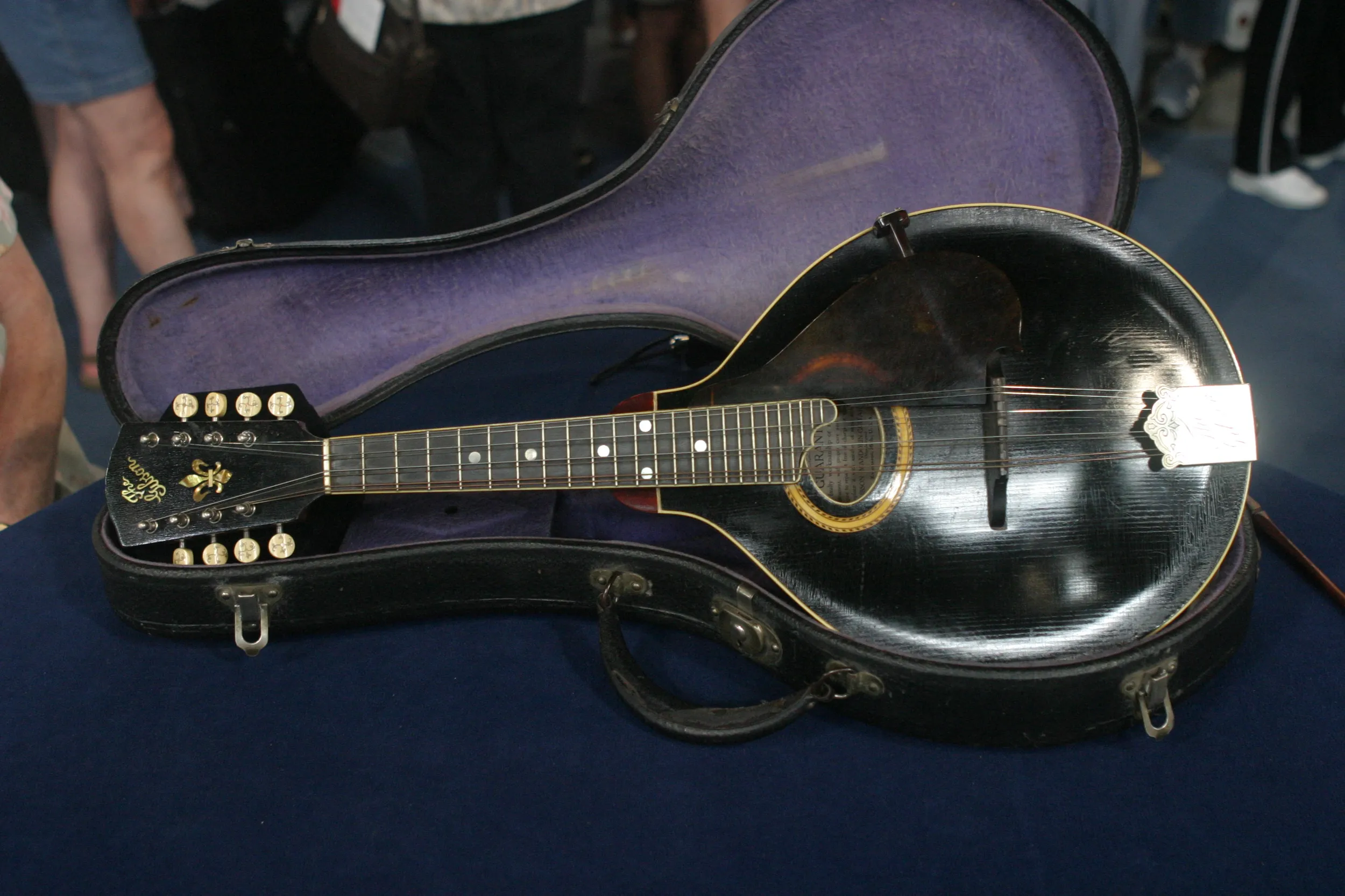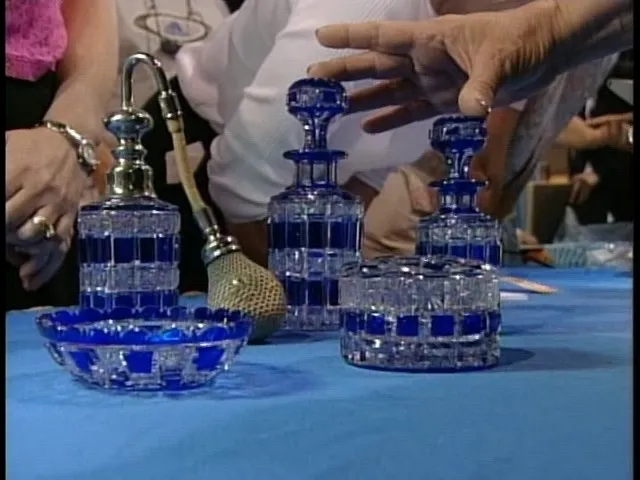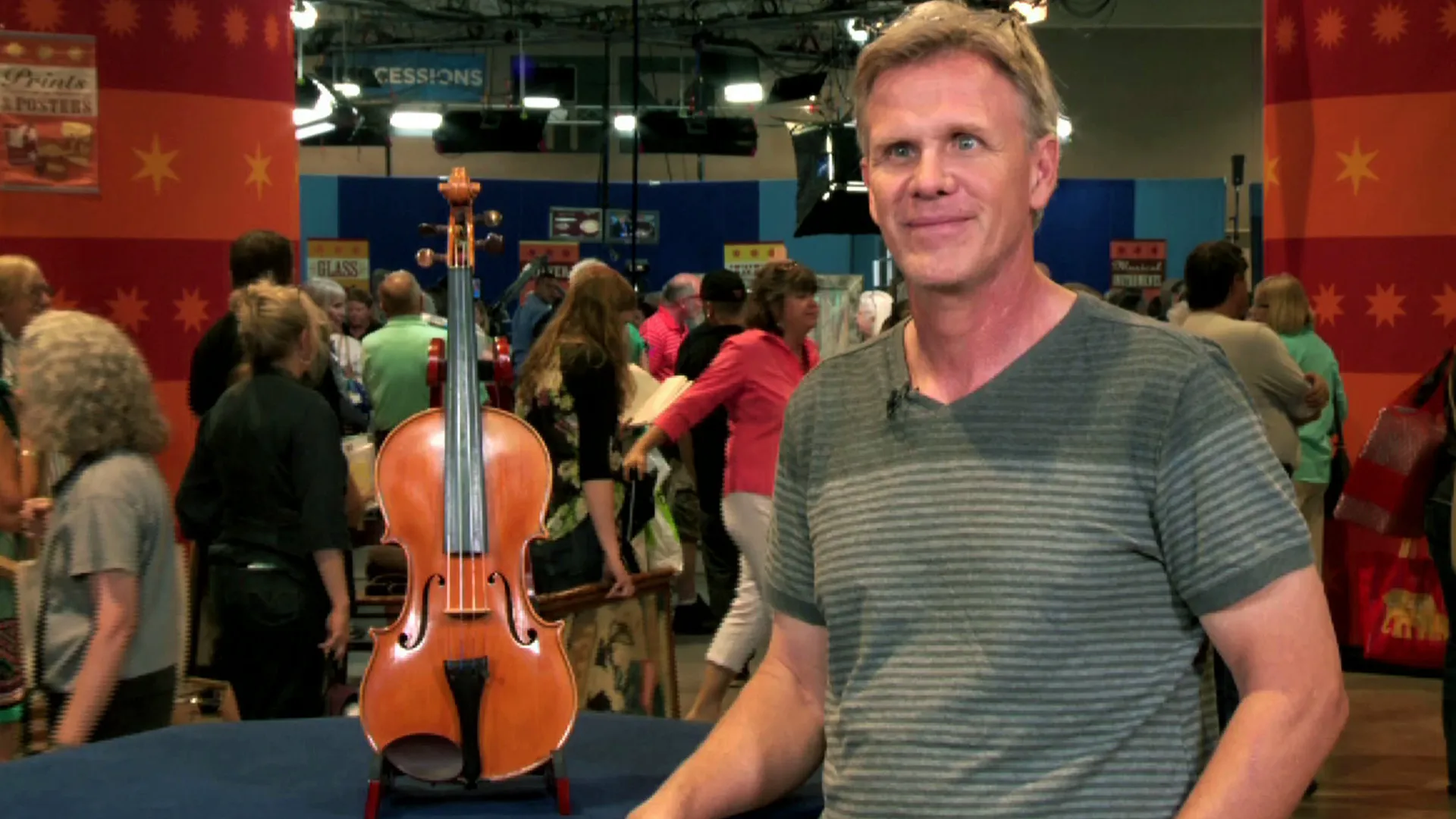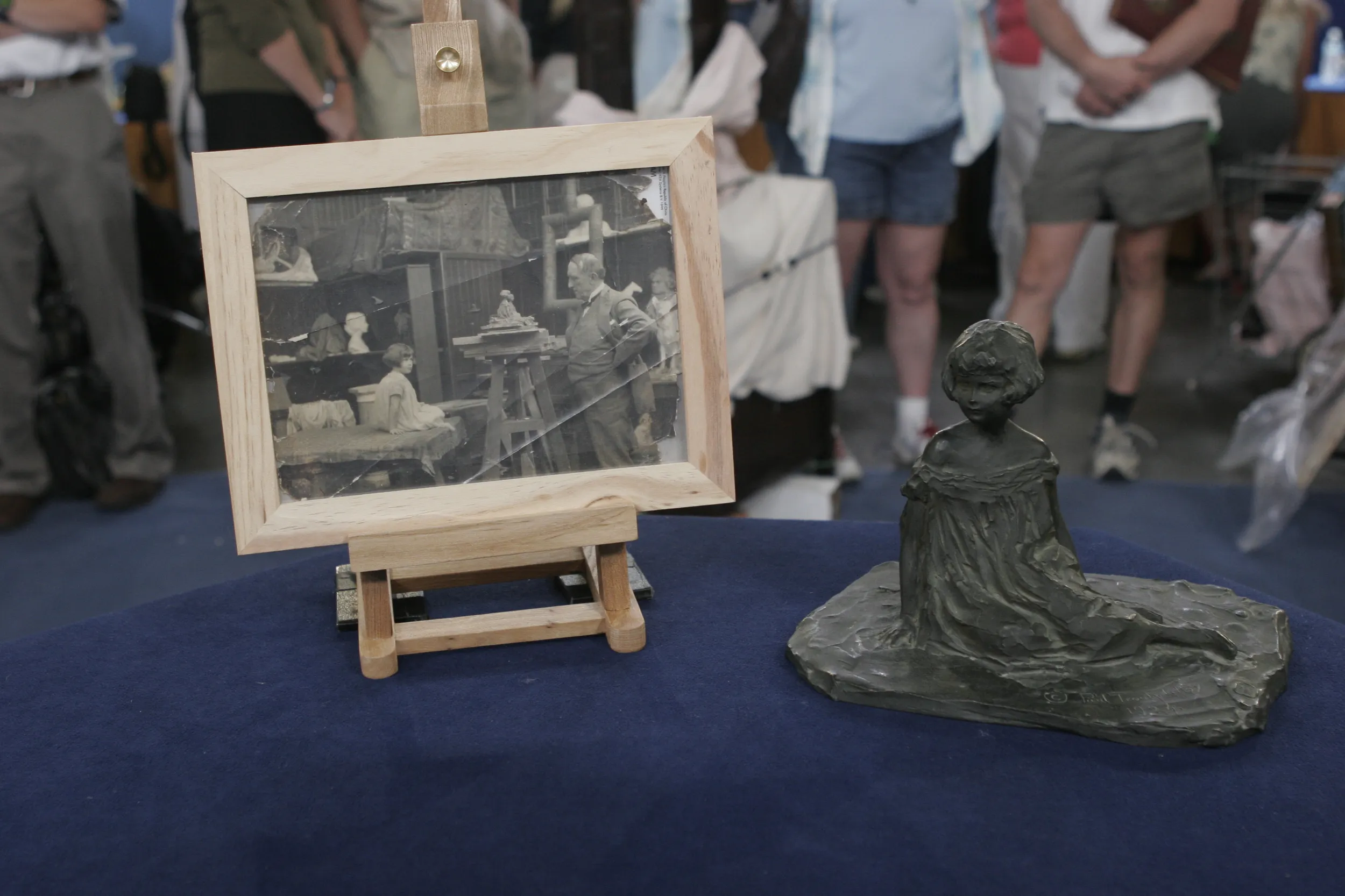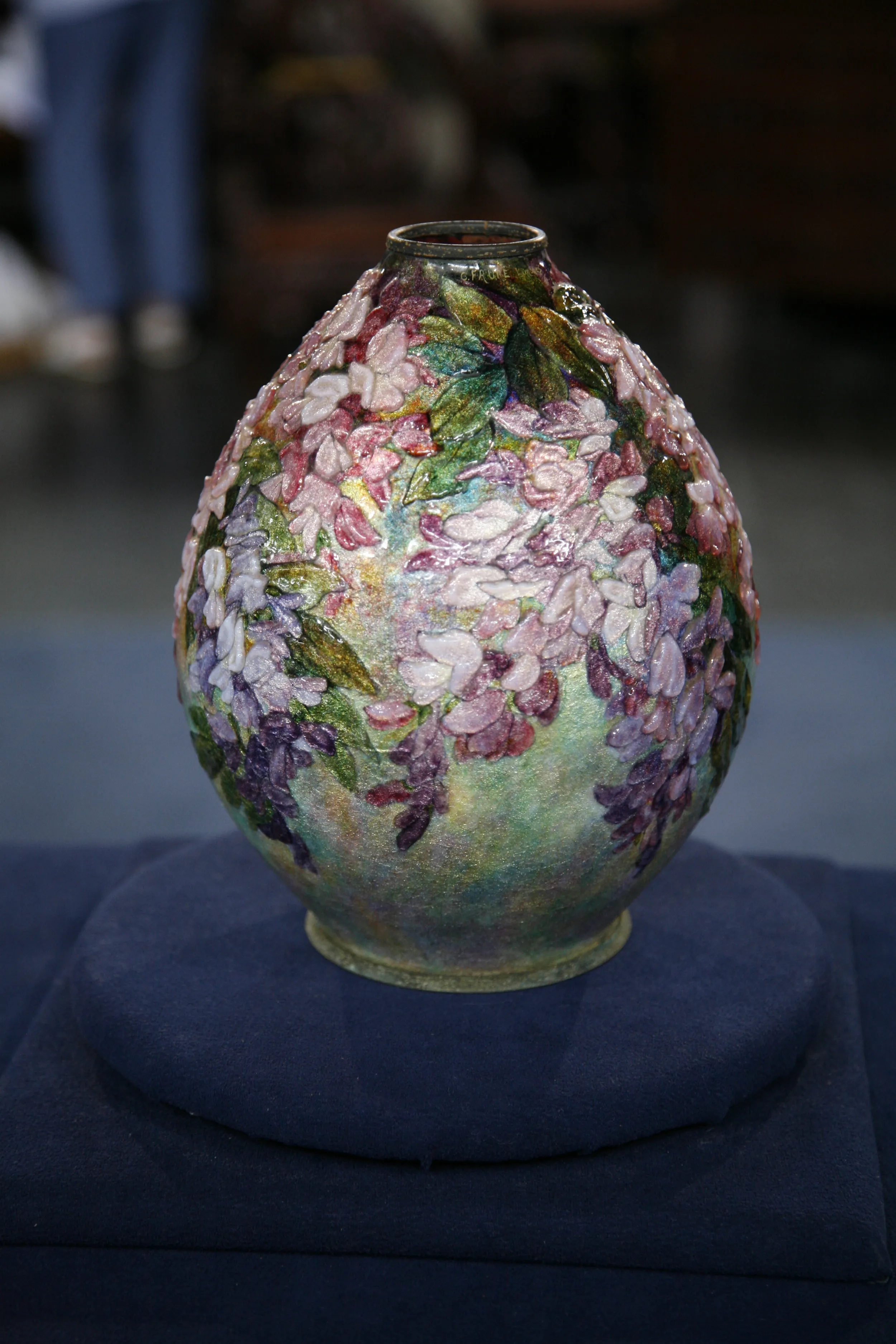GUEST: My grandfather's second wife was coming from East Germany to West Germany, and she brought a lot of possessions including this violin. He was actually, I guess, he was in the army, and apparently met her right at the crossing and that's how that started. I've shown it to a few people in Santa Fe and they've said it's a nice violin. Nobody's said it's awesome or a Stradivarius, and they gave me a couple of numbers.
APPRAISER: What were those numbers?
GUEST: Somebody said five to seven.
APPRAISER: Now was that based on the name inside it?
GUEST: Some of it was the name, but then somebody said a lot of those names were kind of put in there?
APPRAISER: Okay.
GUEST: As opposed to being original?
APPRAISER: Okay, well that's partly true. If we look on the inside of it, it has the label of Romeo Antoniazzi. Now the heyday of this shop was right around 1900. And Romeo Antoniazzi's instruments are highly regarded. This particular violin was actually not made by Romeo, but it was sold through his shop. They probably had a lot of makers that would supply them with instruments, and they would put their own label in it to maybe enhance the value, or to even claim that it was made in their shop, which was done all the time in Italy. I can recognize the actual maker of this violin.
GUEST: Oh really, how?
APPRAISER: By certain attributes of its design that do not match the style in which Antoniazzi worked, but match exactly the style which Claudio Gamberini of Bologna worked.
GUEST: Interesting.
APPRAISER: This violin is probably from around 1920. If we look at this violin, we see a couple of things that are kind of uniquely Gamberini. This edge is a very raised edge, they call that a beaded edge, so that you see how rounded off it is, and how it's thicker than the rest of the plate. If we turn the violin around... this type of wood is called opio, and it is particularly native to northern Italy. Which would include Bologna, which was where Gamberini worked.
GUEST: All right.
APPRAISER: So, the characteristics of opio are extremely fine figure, very tight curl, we call it on maple, which, actually, in these violins, is acoustically very, very good. These makers were quite successful with this type of wood. Gamberini also used a varnish that was laid on quite thin, and then the most revealing part about his work, is this very elongated peg box.
GUEST: Mm-hmm.
APPRAISER: And where it terminates in what we call the eye, the eye of that scroll is very, very big. So all of these are recognizable traits of Gamberini's work. Well, the price of a Gamberini violin at auction, in 2005, was $21,000.
GUEST: Wow.
APPRAISER: That was almost ten years ago. Nowadays, I'd place it in the auction category at about $28,000 to $35,000.
GUEST: Wow.
APPRAISER: If it was sold privately or in a violin shop, at retail level, it would probably be closer to $35,000.
GUEST: That's really interesting. Really interesting, that's fabulous.

